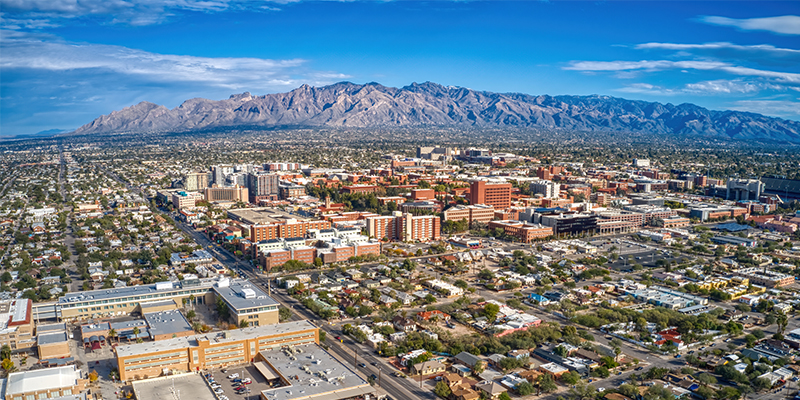A panel of experts gathered at NAIOP’s I.CON West in Long Beach, California, to discuss the fast-growing industrial market in the Southwest, consider opportunities for investors, and examine challenges associated with inflation and affordability.
According to moderator Keith Earnest, executive vice president at VanTrust Real Estate LLC, the Phoenix area has seen incredible demand recently. For example, a record 26 million square feet of industrial space was completed there in 2022 and 26.5 million square feet was leased, also a record. At the beginning of the previous year, the vacancy rate was 3.7%. It dipped to 3% by the start of 2023. Earnest added that area lease rates continue to rise, and the fundamentals of supply and demand look fantastic.
Sven Tustin, executive vice president for Conor Commercial Real Estate, said the top demand drivers in Phoenix are manufacturing, the paradigm shift in e-commerce, and the nearly 6% population growth the area experienced over the last five years.
“It’s fascinating,” he said. “Until recently, we would expect anywhere between five million to 10 million square feet of net absorption heading into the pandemic. We probably expected that to slow down, but then we started getting these huge numbers: 17 million square feet and 25 million square feet… we were trying to figure out what was happening.”
Tivon Moffitt, senior director, office and industrial, for Institutional Property Advisors, forecasts that Phoenix will see the largest population growth in the nation over the next five years, with Las Vegas boasting similarly strong numbers in 2023.
“We project that Vegas is going to have its strongest immigration,” he said. “In the last 15 years, they’ve had spectacular growth. There’s a lot of product under construction, but we’ve got growth in the marketplace.”
Moffitt added that Arizona is seeing an influx from Southern California, along with users from the Midwest and other markets.
On the capital market side, Moffitt said there’s incredible investor interest, and the institutional investor marketplace is strong. However, he said he thinks there will be reduced transaction volume.
“If you look at four years ago, January through March, we had 30 sales of greater than 100,000 square feet on the industrial side,” he said. “If you take out portfolio acquisitions, year to date we’re at six. So the marketplace is adjusting, but we remain very bullish because investors want to be in the Southwest and will have to pay up for a good product.”
Regarding construction costs, Guy Martin, president of Martin-Harris Construction, said he didn’t want to be a “Dougie Downer,” but he noted that investors “better keep the s’mores at home; the fire sale is not coming.”
“I don’t want to be the wet blanket on the panel,” he said. “We have a lot of bills, and we poured a lot of concrete for you folks just this morning. But the reality is that if you have clients sidelining projects while they are waiting for the fire sale, it’s not coming. When you have commodities, they’ll go up 250% to 300%, and they come down 18%. But the forest is not on fire, and wood is not getting cheaper. So our advice to our clients is to draw what you want; let’s go build it. And that’s the only way that you’re going to be first to market with a product that’s there when the demand is.”
With the changes in the market, opportunities could be scarce and may require patience and creativity, panelists noted.
Tustin said his firm is looking to convert office space.
“There’s so much vacant office product out there that’s probably not going to work again as an office,” he said. “When we look at office buildings that look and feel a lot like industrial buildings, especially in Phoenix, it doesn’t take a lot of work to convert those into small, 100,000-square-foot rear-load, front-park industrial buildings.”
In addition to repurposing spaces, Sean Zaher, senior vice president for CBRE, has noted a new trend that will probably make headlines soon.
“One thing not discussed as much in the headlines is the East Coast companies that don’t have a West Coast hub facility,” he said. “Historically, they would have gone into Southern California. Now, they’re stopping at the border, whether it’s Las Vegas or Phoenix, and creating their West Coast hubs there. That’s been a sneaky stat that no one talks about. That will continue, so the Southwest market, both in Las Vegas and Phoenix, is positioned well to be the benefactor of those trends.”
This post is brought to you by JLL, the social media and conference blog sponsor of NAIOP’s I.CON West 2023. Learn more about JLL at www.us.jll.com or www.jll.ca.















